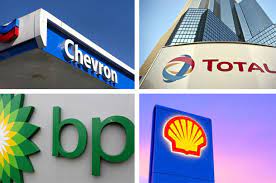International oil and gas majors and the Middle East’s national oil companies are expected to give the green light this year to up to 30 projects, worth a total investment of $125 billion and holding an estimated 14 billion barrels of oil equivalent (boe) of resources.
That’s the estimate in Wood Mackenzie’s latest analysis of upstream oil and gas projects expected to reach final investment decisions (FIDs) in 2024.
The consultancy expects more projects to take FID this year compared to last year’s 22 sanctioned upstream developments as several projects slated for 2023 approval were delayed.
“With many projects delayed or postponed, we expect operators to commit to more projects in 2024 than last year,” said Ross McGavin, principal analyst at Wood Mackenzie.
“National Oil Companies (NOCs) in the Middle East will control the most projects, but the Majors will be busy as well, particularly as they prioritise advantaged deepwater resources,” McGavin noted.
The most advantaged deepwater projects continue to deliver in terms of economic returns and low emission intensity, and these will be the focus of FIDs for Big Oil, according to WoodMac.
The ‘FID class of 2024’ is expected to have much lower average emissions intensity compared to the global upstream average, per the consultancy’s estimates. The projects expected to be sanctioned this year will have an average emissions intensity of 13.6 kg of CO2e per boe, well below the global upstream average of 21 kg CO2e/boe, including liquefaction emissions.
Project economics are also improving, as the share of liquids compared to natural gas is set to grow in the class of 2024 sanctioned projects, WoodMac noted.
The weighted average internal rate of return (IRR) – the estimate of the profitability of potential investments – for the class of 2024 is 23%. To reach just 15% IRR, this year’s project would need an average price of $47 a barrel oil, compared to project breakevens at $49 per barrel for the projects sanctioned last year, according to WoodMac’s analysis.
“The higher liquids weighting and higher long-term price assumptions will improve IRRs for this year’s projects,” McGavin said.
“Most payback periods are less than eight years from FID, as operators focus on rapid execution, lower unproductive capital, and higher returns.”
This year was off to a slow start but FID activity is expected to pick up as the year progresses, Wood Mackenzie said in a report earlier this month.
Abu Dhabi National Oil Company (ADNOC) will be the Middle East’s leader in expansion plans in terms of reserve volumes, with its offshore expansion plans to sanction the Upper Zakum, Lower Zakum, and Umm Shaif gas cap projects.
Meanwhile, in Europe, Turkish national oil company TPAO is expected to approve the largest phase of its giant Sakarya gas project in the Black Sea, WoodMac says.
Not only NOCs will be busy sanctioning projects this year. Big Oil is also set to approve large multi-billion upstream developments.
Out of the expected $125 billion capex on this year’s projects, TotalEnergies is the operator of two of the top five largest projects by capital expenditure. The French supermajor looks to reach FID on projects that would have a combined capex of nearly $30 billion, per Wood Mackenzie’s estimates.
U.S. supermajor ExxonMobil is set to sanction its sixth floating production storage and offloading (FPSO) project at the prolific Stabroek block in Guyana. In the South American country’s offshore, operational Exxon projects are currently producing more than 550,000 barrels per day (bpd) of crude oil and are expected to reach more than 600,000 bpd in output later this year.
Out of the 30 projects set for FID this year, many will be deepwater resource developments, Ian Thom, Director of Upstream Research at WoodMac, said earlier this year.
“Many of these will be deepwater discoveries, with the 10 biggest deepwater oil projects requiring US$52 billion of investment for recoverable resources of 5 billion barrels of oil,” Thom noted.

 Iran Energy News Oil, Gas, Petrochemical and Energy Field Specialized Channel
Iran Energy News Oil, Gas, Petrochemical and Energy Field Specialized Channel



